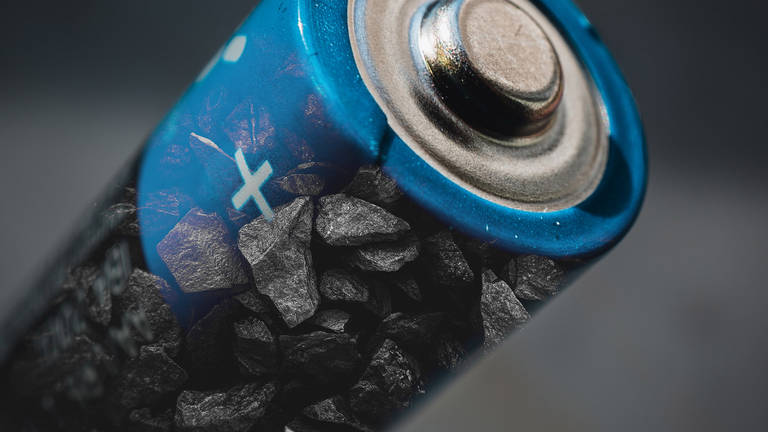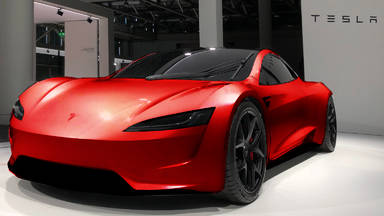
An Australian Graphene manufacturer, GMG, is partnering with the university of Queensland to develop and commercialize a new Graphene-Aluminum-ion battery that according to early tests may be able to fully charge in five minutes or less. Let's talk about this new battery tech and see if it is all hype or if it is a real deal.
Let's start off by talking a little bit about the GMG (Graphene manufacturing group) itself. On their website they described themselves as a clean technology focused company which aims to offer energy-saving products and solutions and energy storage products enabled BY Graphene manufactured in-house via a proprietary production process. They do currently sell a number of different Graphene based products, including Graphene-enhanced heating ventilating, and air-conditioning coatings, lubricants and fluids.
According to an April 2021 article from the university ofQueensland: "Brisbane-based Graphene manufacturing group will manufacture battery prototypes for watches, phones, laptops, electric vehicles, and grid storage under a research agreement with a scientist of the university ofQueensland's Australian institute for bioengineering and nanotechnology."
What is Graphene and how is it related to batteries?
According to a 2019 article from the university of Waterloo, Graphene is an allotrope of carbon which comprises a one-atom thick layer of carbon atoms arranged in a hexagonal honeycomb-like structure. Simply put, Graphene is a single layer of graphite, the same material we use in pencils to write with. They also mentioned that Graphene has an extremely high electrical conductivity. Plus, Graphene's high electrical-current density (the rate at which current travels through a cross-sectional area) is a million times more than copper.
Graphene is also considered an excellent heat conductor. Several studies have found it to have unlimited potential for heat conduction. Theoretically, Graphene could absorb an unlimited amount of heat. When you combine these two attributes high electrical-conductivity and also high thermal-conductivity, this potentially allows for extremely fast charging (and discharging as well), all while maintaining safety. In Graphene aluminum ion batteries, the cathode is made up of Graphene, the anode is made up of Aluminum in a foil form, and the electrolyte is made of Aluminum-Chloride.
What is a Hybrid Supercapacitor?
Well, a regular Supercapacitor can be charged and discharged very quickly, without damage. However, it has very little energy density and has a low operating voltage lower than that of a traditional Lithium-ion battery. On the other hand, a Lithium-ion battery has a much greater energy density, but does not have the ability to charge and discharge as quickly without damaging the cells. A Hybrid Supercapacitor is a mix of these two technologies. Comparing to symmetric supercapacitors, a Hybrid Ssupercapacitor has a higher operating voltage and much higher capacitance and energy density. However, typically these hybrid supercapacitors still fall short of current Lithium-ion battery tech.
While other lab-tested Graphite-Aluminum-ion batteries have energy densities well below 100 Watt-hours per kilogram, the university of Queensland has developed a process that the CEO of the Graphene manufacturing group describes as drilling holes in the Graphene platelets, allowing the aluminum atoms to sit tighter, which reduces the amount of weight you need to store a charge. This results in a Graphene-Aluminum-ion battery with an energy density in the 150 to 160 Watt-hours per kilogram range.
Although these Aluminum-ion batteries definitely fall short when it comes to cell-level energy density, that is not all that matters. Aluminum ion batteries do not overheat nearly as much as Lithium-ion batteries do. Almost 20 percent of the weight and cost associated with a Lithium-ion battery pack is attributable to high performance cooling systems which can be eliminated in most aluminum ion battery use cases. This reduction in cooling systems could make this technology make sense for a lower-cost, lower-range electric vehicle. Also with the ability to rapidly charge these batteries in one to five minutes, the shorter range becomes much less of an issue.
When it comes to the cycle-life of this new technology, these Graphene aluminum ion batteries are able to last over 2000 charge and discharge cycles without any major performance loss.
This battery tech also has the added benefit of a more simple supply chain. The main materials needed to manufacture Graphene aluminum ion batteries is Aluminum, Natural gas, and electricity. These are all, Of course, readily available in most countries and relatively inexpensive. This allows for a truly local supply chain and cost-competitive batteries.
In addition to easily obtainable materials, Aluminum is the most commonly recycled metal and is easily recycled from these batteries at the end of its life.
What about the high cost of Graphene?
Most commercially available Graphene is very expensive and thus would make these batteries cost prohibitive. However, the GMG is a Graphene manufacturer and the proprietary process appears to be much more cost effective than other Graphene production processes.
When will we see these batteries in EVs?
In a recent interview, the CEO of GMG mentioned: "We are using existing tech to make the batteries. we are just changing the chemistry and changing the materials that go into the cells." This should definitely make the transition from prototype to commercial product much easier and quicker. Also according to a recent company presentation, they hope to have Coin-cell commercial prototypes ready by the end of this year, and pouch cell prototypes by the end of next year. Such pouch cells can be used in cell phones, laptop computers, grid storage, and also electric vehicles once they have proven them out.
In summary, these Graphene-Aluminum ion batteries have the potential to charge extremely quickly, they decrease the risk of fire, and also lower the cost while simplifying the supply chain for the battery materials needed to manufacture them. Despite their lower energy densities, they still appear viable for lower-cost, shorter-range EVs.
While this technology is not hype and does offer a lot of promise, unfortunately it will still be quite a while before we see this technology in electric vehicles unless larger companies, like Tesla, come along and purchase this company and speed up the development of this technology.









